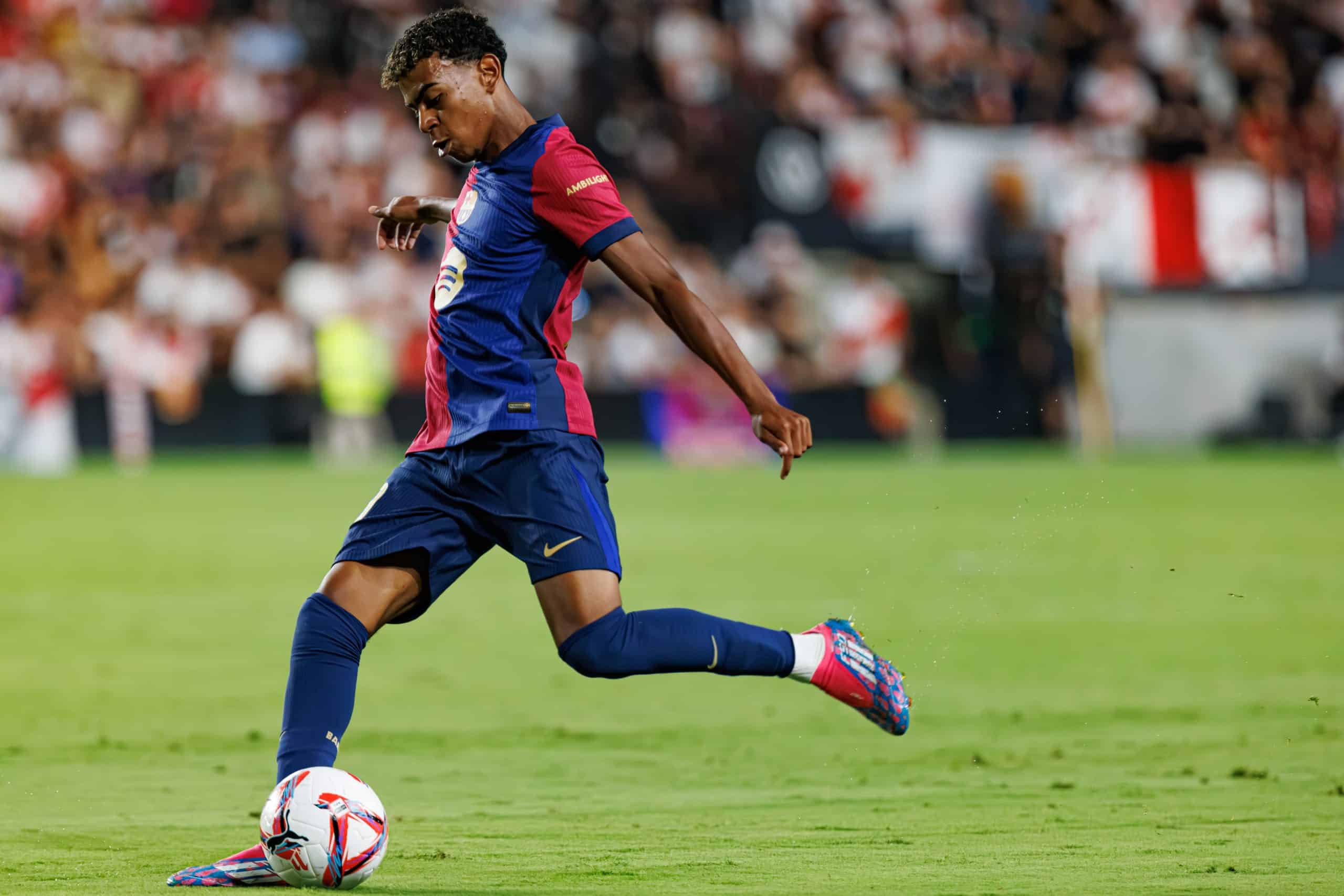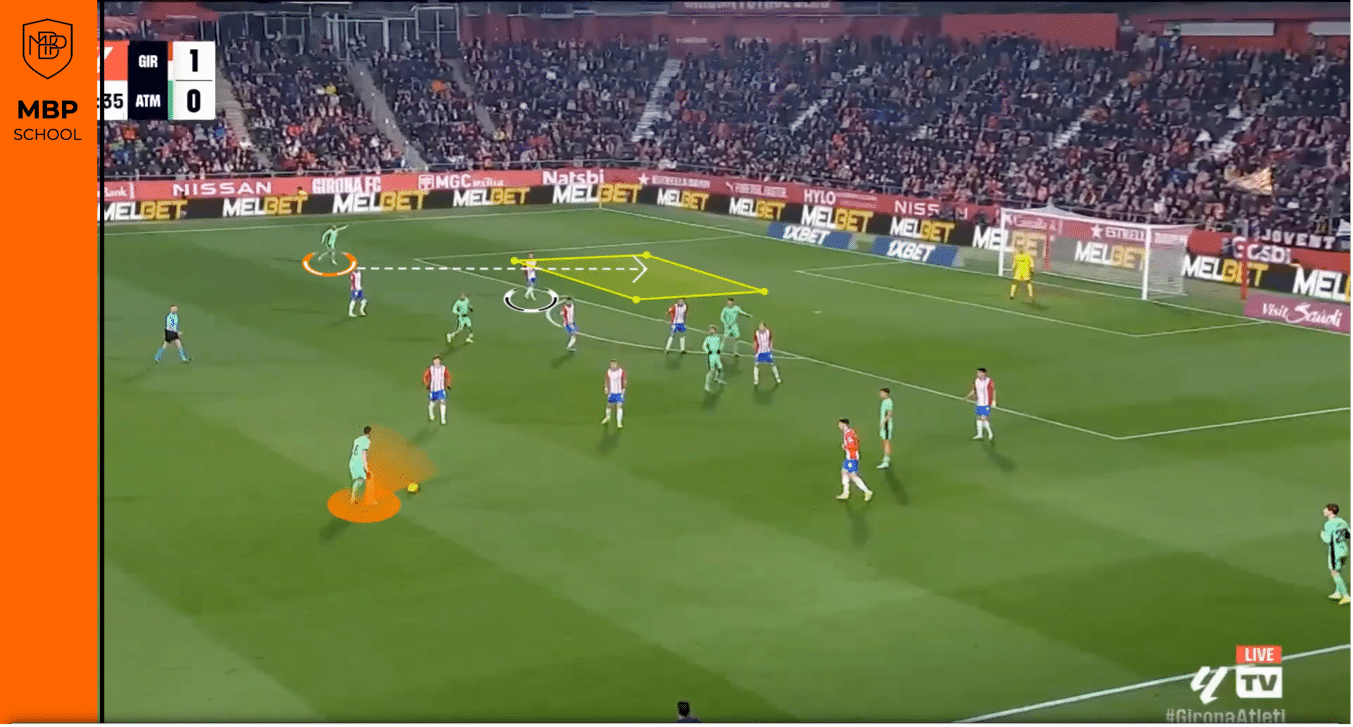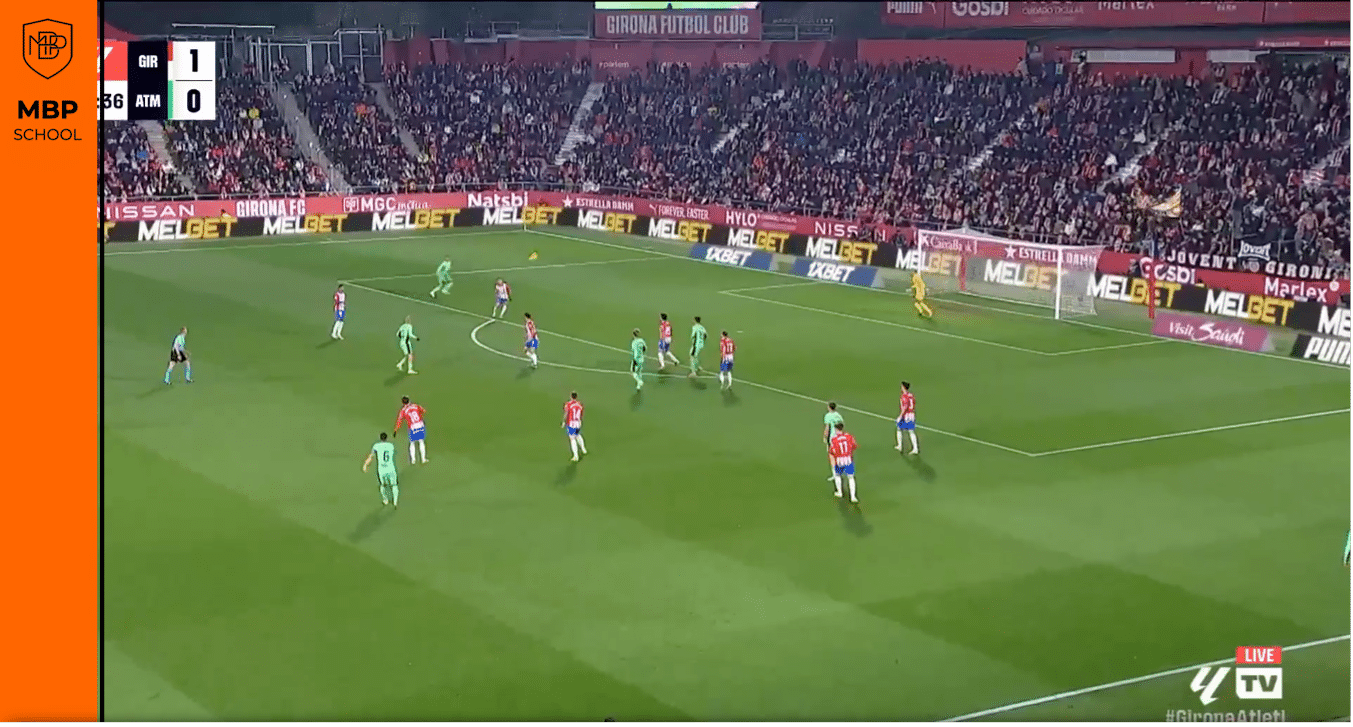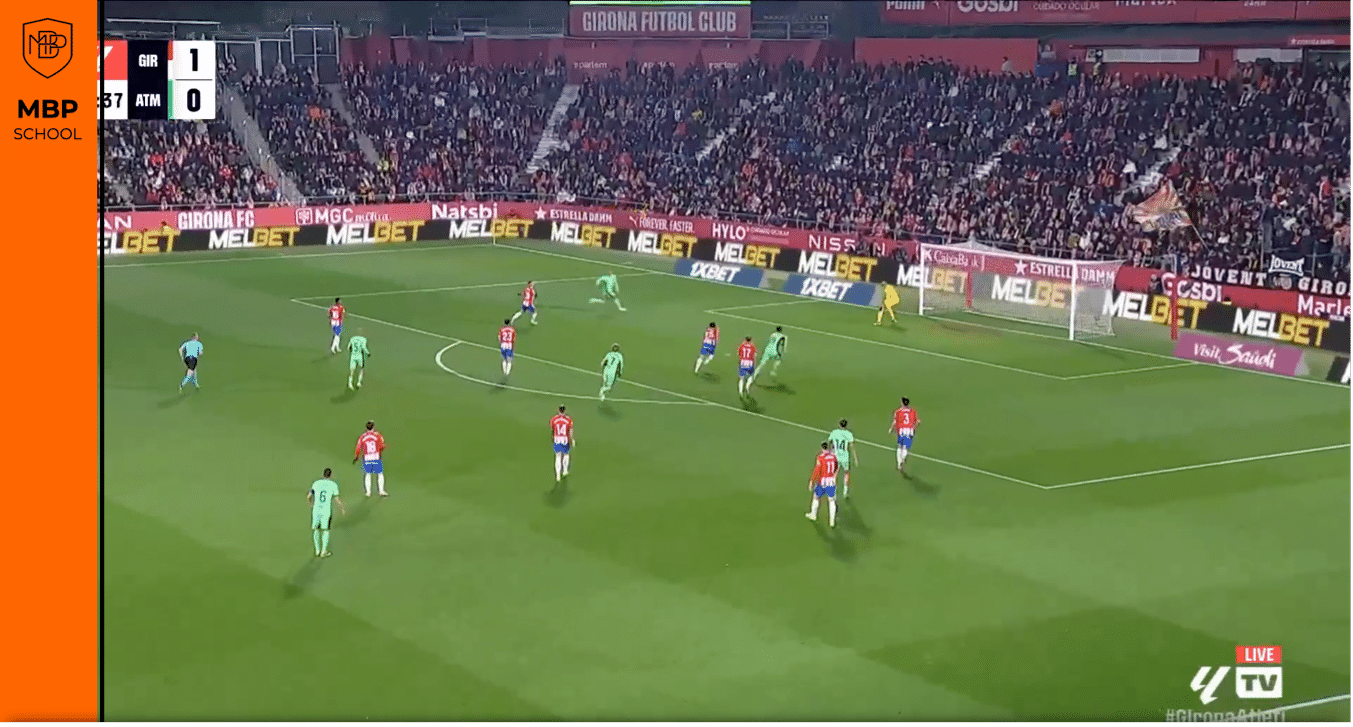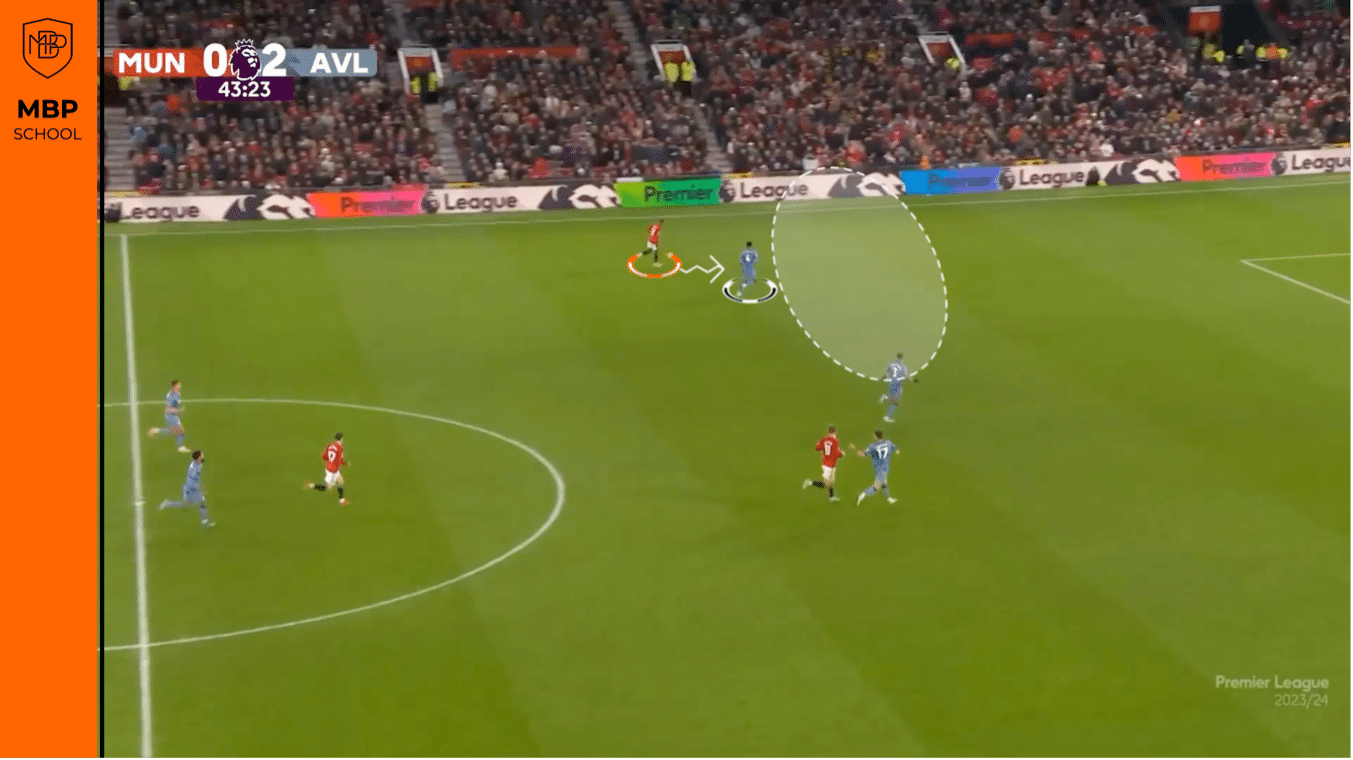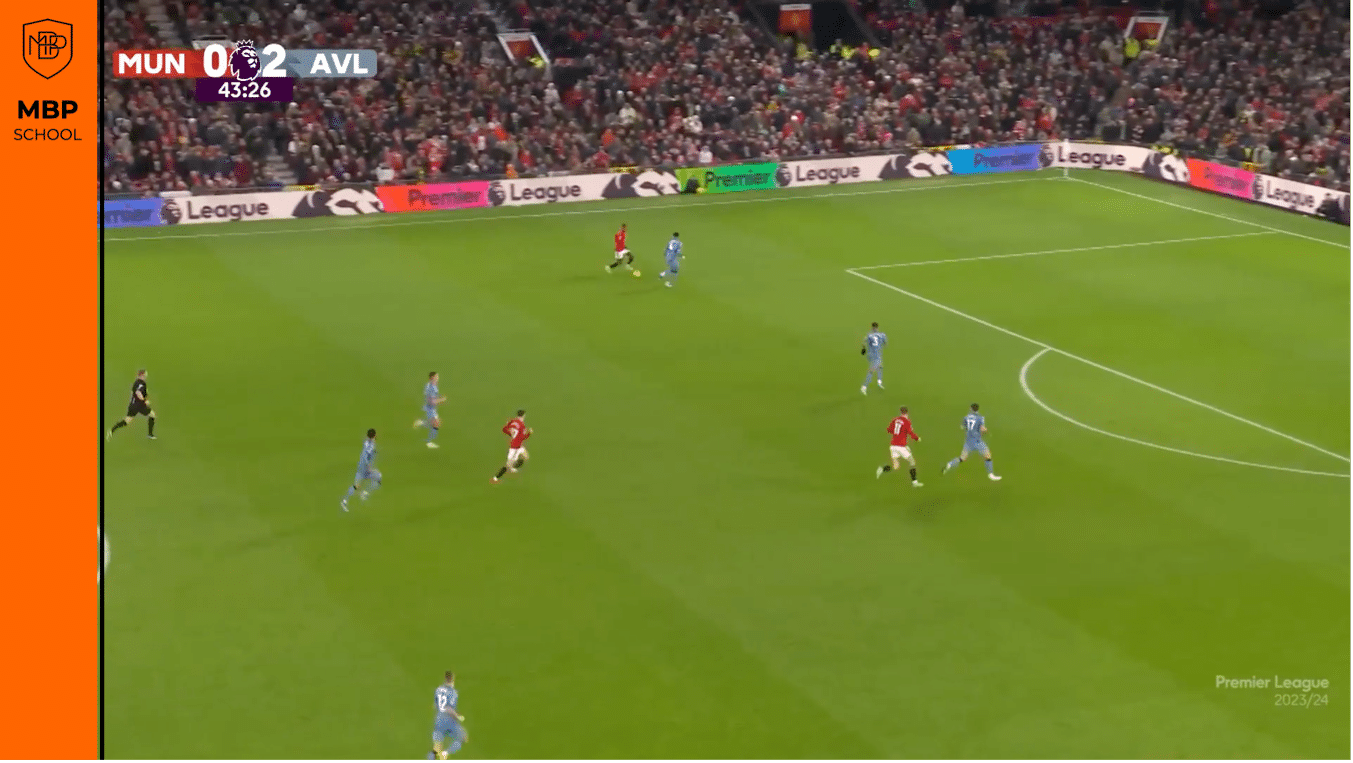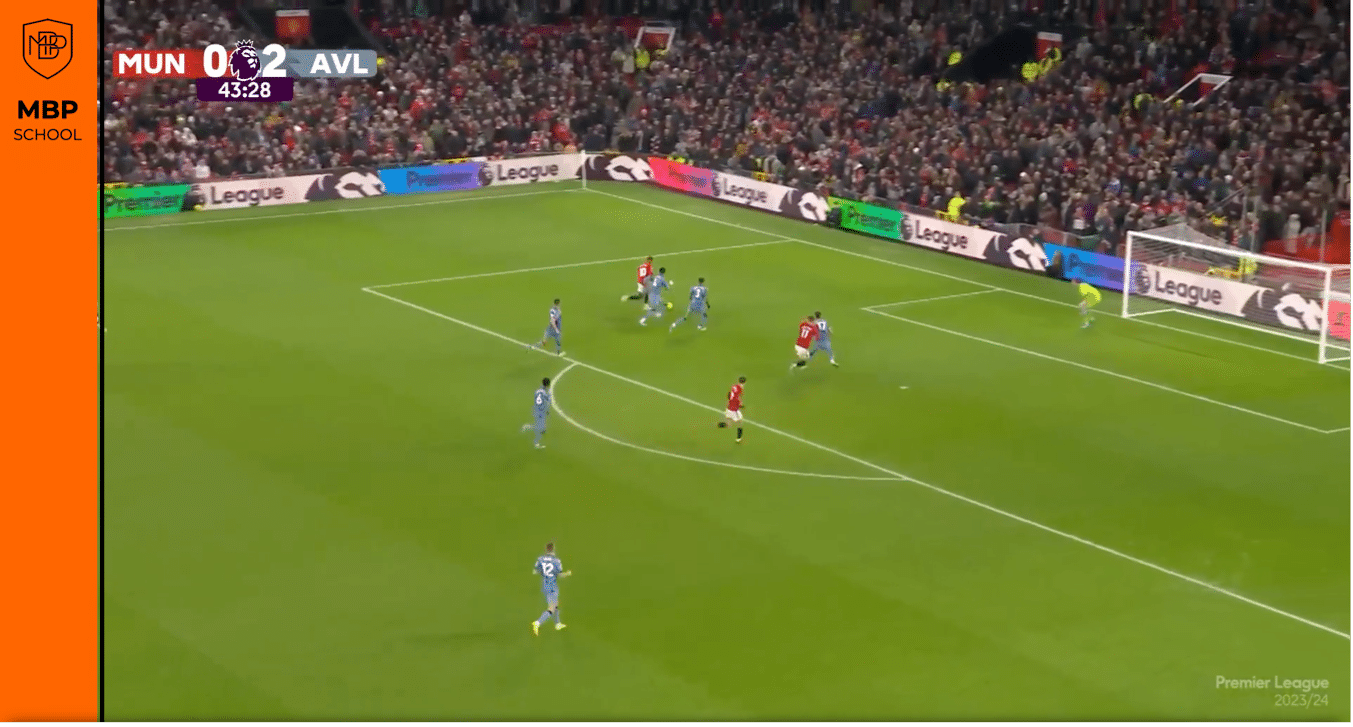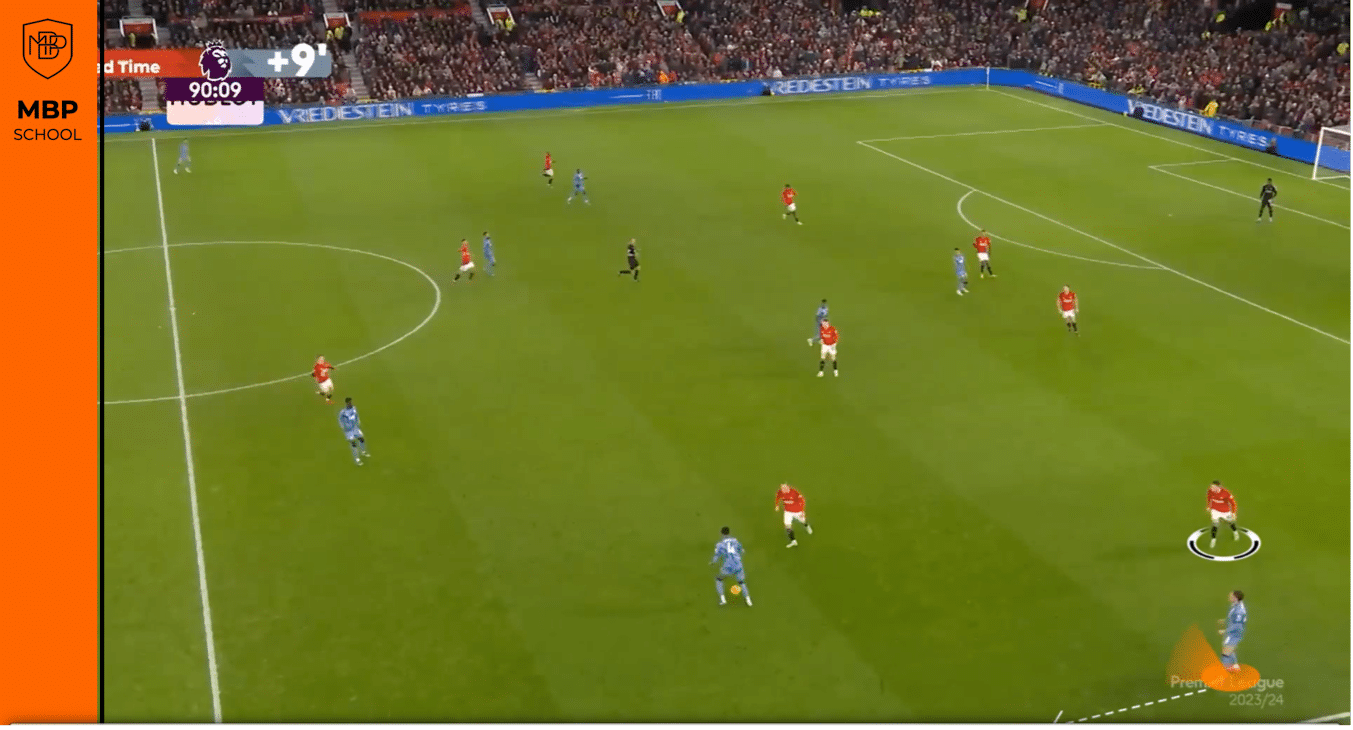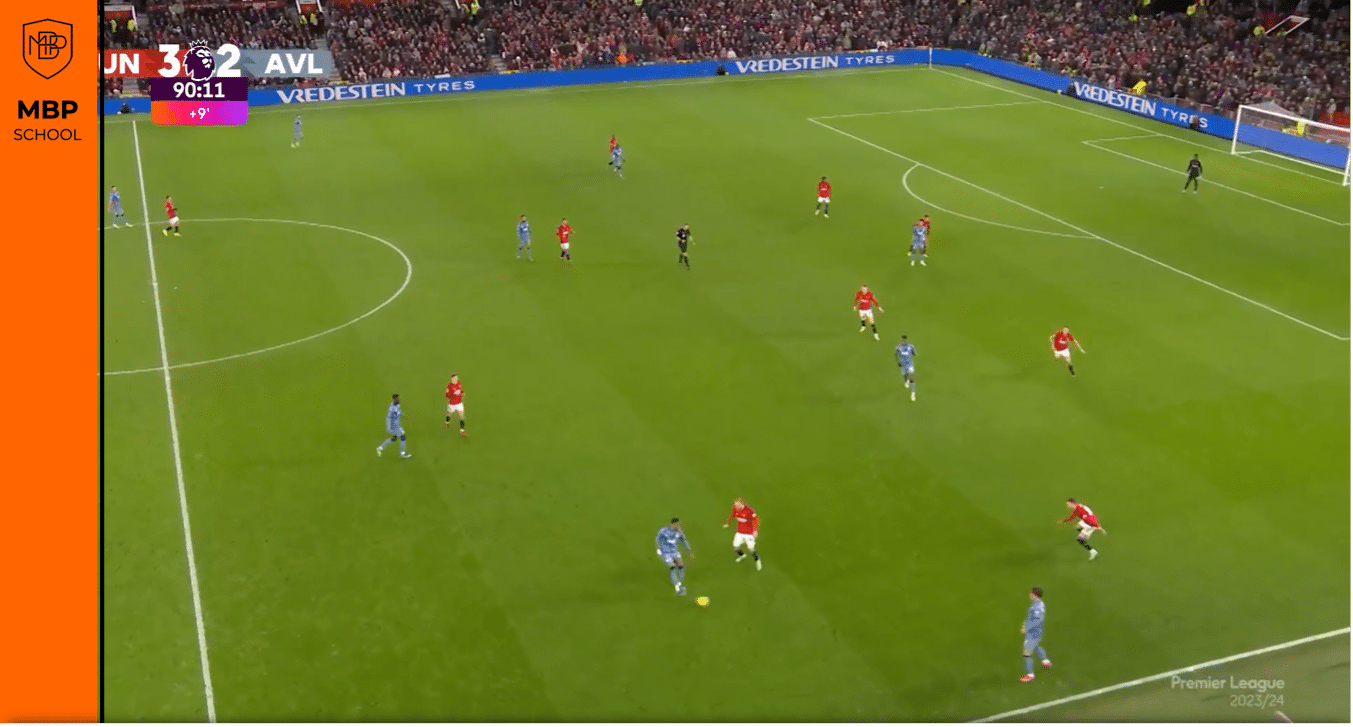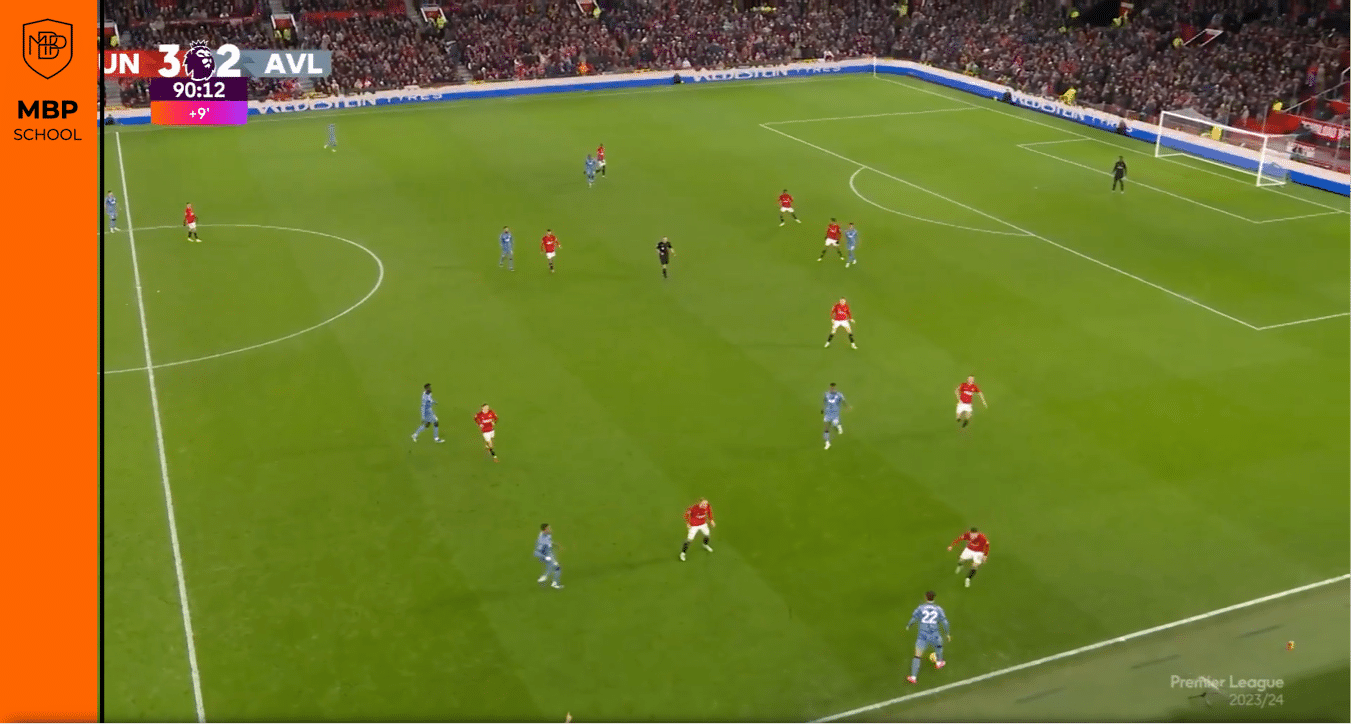In high-performance, we will not only train collective aspects linked to the game model, but we must also optimise the individual performance of our players in order to increase the performance of the team. To this end, MBP (2019) proposes the training of individual fundamentals by position, i.e. solutions considered optimal that allow players to solve specific playing situations (Rudé, 2020). In this case, we will analyze the wingers.
In the case of the winger position, we have selected three fundamentals which are key to optimal performance during the game:
- Looking for the defenders’ backs: this appears when the winger is giving width and positioned on a diagonal trajectory, and the defender is close to them, facing the ball.
Sequence of 3 images where you can see the left winger dismarking behind the opponent’s full back to receive the ball in the box. Source: Wyscout
The winger will dismark in the direction of the goal instead of the corners. He should not start the movement from the height of the defensive line, but a few metres further back (horizontally + vertically or diagonally progressively).
The movement should be made behind the back of the opposition full back when the ball is in the central channel and the full back is close to them or attracted by the ball, as this will open up the passing line.
- Attacking the defender 1v 1 in situations of a spatial/qualitative advantage: this appears when the winger has the ball in a 1v1 situation with a low level of defensive cover.
Sequence of 3 images where you can see the winger facing the opposition winger in a situation of spatial advantage in front of them. Source: Wyscout
The winger must face the defender in 1v1 situations when they have spatial advantage on the inside or outside, or the defensive cover is far away. The progression has to be towards goal to find enough space to enter after beating the defender, either on the inside or the outside.
- Offering passing options whilst maintaining the width: this appears when the winger is wide with the direct opponent very close to them, and the on-ball player is diagonal to the winger.
Sequence of 3 images where you can see the winger offering support to the on-ball player, being well oriented and without being tight to the opponent’s full back. Source: Wyscout
The winger must offer support to the on-ball player while providing width, with the body facing side-on and opening up space for the pass (diagonal support to the ball possessor).
These three individual fundamentals of the winger are key to optimising their performance in the game. therefore, we must be able to understand the playing situations in which they are presented in order to train them with our players so that they are able to apply them to real game situations.
Do you want to learn more about individual fundamentals by position?
The course ‘Specialist in Individual Fundamentals by Position’ will allow you to study in depth the more than 90 individual fundamentals by player position. All these fundamentals are the result of an exhaustive study of each and every one of the most common and relevant situations in which each player finds themselves in during a game depending on their position on the pitch. Once these situations in the game have been identified, we study which are the optimal solutions that give the player the best chance of success.

